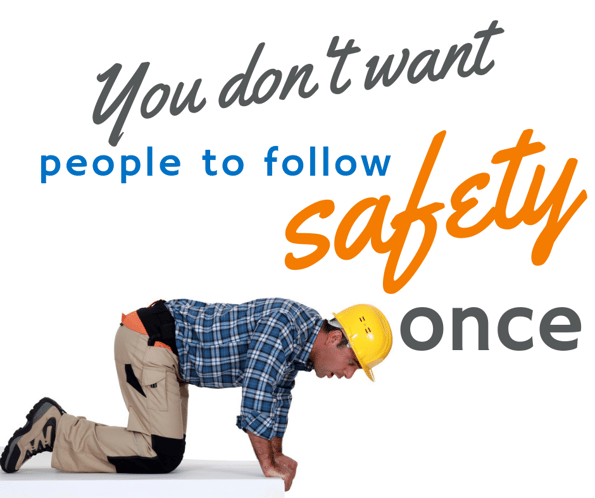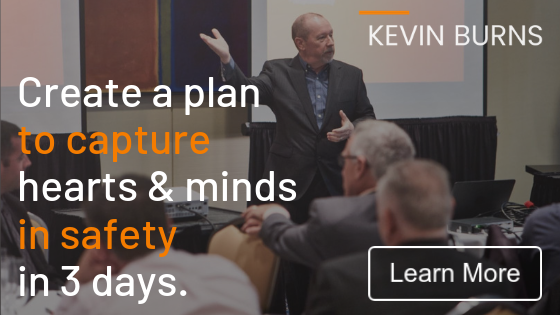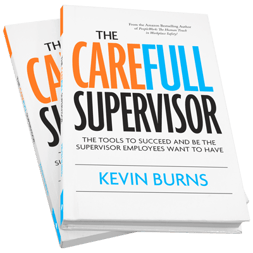Eat in your favorite restaurant and what you don’t see is all of the conditions and laws that the restaurant must comply with before they get a permit to handle food. Restaurants get regular visits from the Food Safety and Health Inspector.

Most restaurants do a pretty good job of not only meeting the bare minimum of the Health Code but in actually surpassing it. Well, the good ones do. There are others that need much more encouragement.
In his book, Front of the House: Restaurant Manners, Misbehaviors & Secrets, author Jeff Benjamin presented a key strategy for helping his restaurants to become successful. That strategy is to get every staff member, from front-of-house, to servers, to kitchen staff, to dishwashers, to buy-in to the mission of creating an exceptional experience that makes customers want to come back often.
If any member of the staff does not buy-in, it jeopardizes the success of the restaurant. A restaurant isn’t just about food safety, or health guidelines. It’s about how they use those guidelines and protocols to deliver an exceptional experience for the customer. But you want to know how this relates to your safety program.
Read on and watch the video below...
Restaurants don't want one-time customers
Getting people to come to a restaurant one time is the easiest thing in the world. Just make a lot of noise and throw money at it. Hold a grand opening, or a special promotion or offer a discount. Any of those will bring people in and you can fill your restaurant. But you can’t have a grand opening every day, or discount your food items every day, or have another promotion every day. People tire of it and it’s not special anymore. Besides, your competitors would be doing the same thing and stealing traffic on the nights they have a big event. These events are meant to drive traffic to the restaurant one time in the hopes that they will come back.
But, the problem is that restaurants don't want one-time customers. They want you to come back - a lot. They want you to bring new people with you. They know that to make to that happen, the better your experience, the greater the chances of you coming back often.
For a restaurant to do that, the food and service has to be excellent, atmosphere must be comfortable, the price has to be fair for the experience (the higher-end the experience, the higher-end the price), and that the customer needs to feel like their business matters.
So, what has this got to do with safety?
Getting people to follow safety one time is also easy. Simply enforce the rules and regulations and people will follow safety. But, that’s not the goal, is it? The goal is to get your people to voluntarily want to do safety, to get their co-workers to follow along, and to do it repeatedly, every day.
Like a restaurant, an employee’s experience of the safety program has to be excellent if you want them to do it again and again voluntarily. You need to be firing on all cylinders in making the safety program be more of an experience rather than a bunch of rules to comply with. Safety meetings have to be engaging. Supervisors need to be active listeners. Safety messaging has to resonate with employees. And there has got to be effort made to raise employee motivation and make them want to do safety again and again.
And to accomplish that mission, everyone needs to be plugged in; supervisors, safety people, middle managers, everyone. And they have to focus on doing three things:
- make sure that the front-line employees enjoy coming to work,
- that they feel valued when they get there, and
- that they are encouraged to join their co-workers to take ownership of the safety program.
Getting people to do safety one time is easy. But you want them to do it daily without being told and to enjoy the positive experience of the safety program.
Track your success metrics
 Good quality restaurants don’t track how many fewer people got sick, or slipped in the bathroom, or had hot coffee spill on their back. Instead, they track their success metrics. They track their return customers and how full their restaurant is. They track the quality of their food and their service. They track the engagement of their employees. They track the experience of the end-users, the customers. And they assemble their people to work as a team to do it – where every member of the team understands with clarity how they are responsible for the success of the business. They get employee buy-in to the mission: the customer experience.
Good quality restaurants don’t track how many fewer people got sick, or slipped in the bathroom, or had hot coffee spill on their back. Instead, they track their success metrics. They track their return customers and how full their restaurant is. They track the quality of their food and their service. They track the engagement of their employees. They track the experience of the end-users, the customers. And they assemble their people to work as a team to do it – where every member of the team understands with clarity how they are responsible for the success of the business. They get employee buy-in to the mission: the customer experience.
Restaurants know that you to want to return to where you feel valued. Where your business matters. It’s the same way when people feel like they matter at work. They want to come back again and again. So, and I hope this isn't a spoiler alert, make people feel like they matter.
What’s your mission?
Is it to enforce the rules or to build a team focused on surpassing the rules? Is it to get compliance or to get buy-in to the mission? Is it to meet the bare minimums of the safety code or to consistently deliver the best quality, highest engagement and to assemble a focused, high-performance team?
Meeting the minimums of the safety code is the least you’re allowed to do by law. Delivering consistently high quality, excellent teamwork and engaged employees who care about looking out for each other is infinitely harder. But, so much more rewarding.
--
Kevin Burns, consultant/author, works with smart, caring companies to energize safety culture, build teamwork, and get employee buy-in. Kevin is on a mission to help employees purposefully care about the work they do and to actively look out for the people they do it with. Download your free copy of Kevin's Safety Leader's Code.


